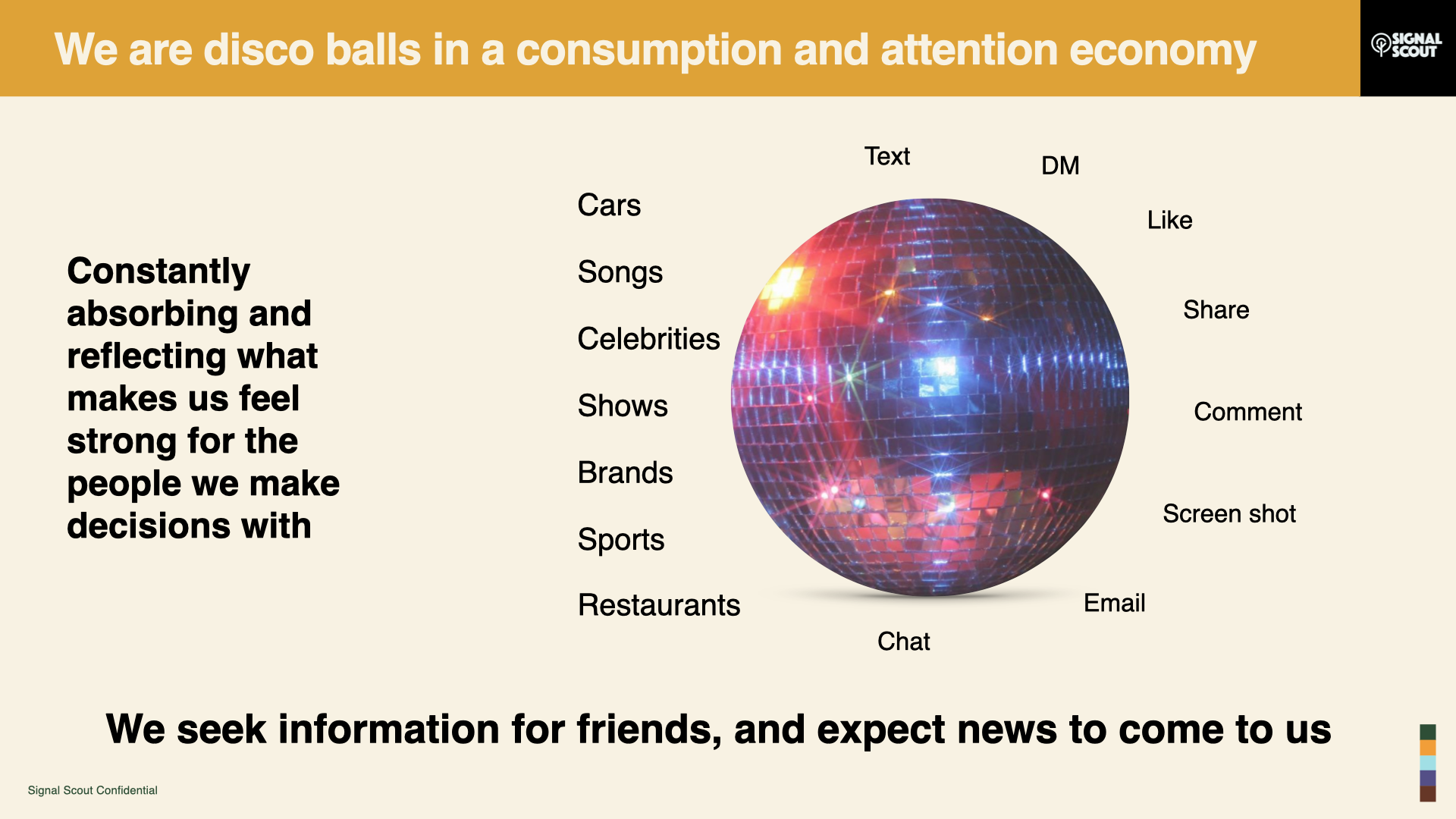Understanding how your customer buys you
Cultural Segmentation brings customer choice into the marketing investment and decision-making process. As a practice, it gives marketers the ability to filter business goals into persuasive, relatable brand growth. It brings together the identity and decision-making signals people create in omnichannel and AI technologies. We can then decode and organize that cultural data into campaigns that help people confront, internalize and act on new ideas.
The result of cultural segmentation early in marketing strategy is dynamic: every campaign or programming asset informed by it will outperform its category. We came to it over time as a way to get assets in market fast that advocate for core audiences in times of brand crises.
Since then, it’s become an enduring practice to create consensus around where the brand fits in the lives of it’s customers, instead of spending time understanding how the brand organizes its functional benefits in comparison to the category.
Omnichannel and AI: Digital Herd Tracking
We operate in herds to share strength, because we know that’s how we thrive as individuals and as a species. In our consumption and attention economy, we’re living like herds of disco balls: constantly collecting and reflecting choices to the people we care most about. Those choices are captured digitally as we post, DM, and like, to signal something about us that we want to be proud of in front of our closest friends and family.
Buying happens because decisions were already made in social groups between at least two people, and then executed tactically as purchases in a moment of need. Those purchases remain as a reflection of a stronger bond between people who need to keep sharing joy together.
Omnichannel and AI technologies have shifted the premise of marketing from competing in a category to fitting within the social decision set of our customers.
Being the functional best, and going big on messaging that features your superiority within your category is actually putting organizations in a weaker position than being the easiest to choose and buy.
Create consensus from the intersection of business rules + Cultural Segmentation
To create marketing that matters, the job to be done is at the intersection of business needs and customer culture.
But how do you do that job when the organizational answer to growth is research inside the business data (business rules, sales segmentation) and among category competition: mechanisms of how the business understands customers that have already bought something?
When we institutionalize data-driven cultural segmentation as equal to business rules in our strategic development, everyone gains the opportunity to institutionalize investment in customers’ moments of shared joy that relate to what we do best. It organizes feature/benefit prioritization, narrows channel and tactical choices, and puts media to work. Best of all, it works explosively well at achieving faster, cheaper growth in complex markets.
Cultural Segmentation puts the brand in a position to receive the financial and growth benefits of being in the business of elevating customer’s everyday experiences. All we have to do is know how to look for the right signals.
Identity = socially safe choices + context
To understand decision making, we need to know
How you build and rebuild identity
What are you proud to show people close to you, or people who could be close to you, to strengthen your herd, and your place in it
Choosing and norms
Who is in the decision group, and how do they shortcut shared agreements about what to do in situations
How do they define and enforce norms?
Context
What is perceived as abundant or scarce?






